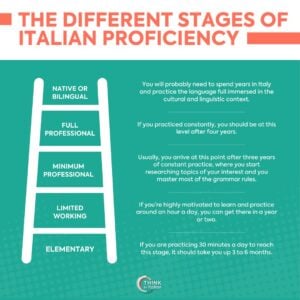Prima che or prima di?
First of all, we must differentiate between prima di and prima che, which in English can both be translated as before.
Prima di takes the infinitive, which is the basic form of the verb, while prima che takes the subjunctive:
- Prima di + infinitive
Mettiti la giacca prima di uscire.
Put your jacket on before going out.
Voglio mangiare prima di andare al cinema.
I want to eat before going to the cinema.
- Prima che + subjunctive
Prima che tu esca ti devo dire una cosa.
Before you go out, I need to tell you something.
Mangiamo prima che faccia buio.
Let’s eat before it gets dark.
How to use prima che + subjunctive?
Prima che is a temporal conjunction (congiunzione temporale), which indicates anteriority.
This means that it can be used to combine two sentences in which the action or occurrence described in one sentence happens before the action or occurrence described in the other.
The temporal conjunction prima che is always followed by the subjunctive mood, whether in the present, imperfect or past.
Have a look at the examples below.
- Present:
Spero di arrivare prima che inizi a piovere.
I hope to arrive before it starts raining.
Cuciniamo prima che arrivino i miei, no?
Let’s cook before my parents arrive, shall we?
- Past:
Ci sarebbe piaciuto arrivare prima che uscissi.
We would have liked to get here before you left.
Sandra voleva partire prima che facesse buio.
Sandra wanted to leave before it got dark.
Do other conjunctions require the subjunctive?
Prima che is not the only Italian conjunction that requires the congiuntivo.
Here are some other common ones, with examples, so that you can learn to recognize them!
- A meno che (unless)
Non fidarti del suo parere, a meno che non sia un medico.
Do not trust his opinion unless he is a doctor.
- Sebbene (although)
Sebbene avesse più di cinquant’anni, vinse la gara.
Although she was over 50, she won the competition.
- Nel caso (che) (In case)
Nel caso (che) tu non abbia voglia di cucinare, ho preparato una zuppa.
In case you don’t feel like cooking, I prepared a soup.




















2 Responses
Tranquilla, anche gli italiani sbagliano il congiuntivo. 😉
Hi, Sefano,
Ho trovato questa lezione sulle congiunzioni/congiuntivo che mi sembre difficile da padroneggiare.
Ho bisogno di tonnellato di pratica. Mi dispiace per gli errori.